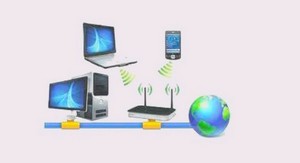2.DOCUMENT STATUS
2.1COPYRIGHT NOTICE
2.2ERRATA
2.3COMMENTS
3.REFERENCES
3.1NORMATIVE REFERENCES
3.2INFORMATIVE REFERENCES
4.DEFINITIONS AND ABBREVIATIONS
4.1DEFINITIONS
4.2ABBREVIATIONS
5.INTRODUCTION
6.THE PUSH FRAMEWORK
7.THE PUSH PROXY GATEWAY
7.1SERVICES OVERVIEW
7.2ACCESS FROM THE INTERNET SIDE
7.3MESSAGE HANDLING SERVICE
7.4ENCODING AND COMPILATION
7.5MULTICAST, BROADCAST AND ALIASING CONSIDERATIONS
7.6CLIENT CAPABILITY QUERY SERVICES
7.7REFERENCE
8.THE PUSH ACCESS PROTOCOL
8.1GENERAL STRUCTURE
8.2PAP OPERATIONS
8.3PUSH SUBMISSION
8.4CONFIRMATION NOTIFICATION
8.5PUSH CANCELLATION
8.6STATUS QUERY
8.7CLIENT CAPABILITIES QUERY
8.8HTTP TUNNELLING
8.9REFERENCE
9.THE SERVICE INDICATION
9.1REFERENCE
10.THE PUSH OVER-THE-AIR PROTOCOL
10.1REFERENCE
11.THE CLIENT-SIDE INFRASTRUCTURE
11.1THE SESSION INITIATION APPLICATION (SIA)
11.2THE APPLICATION DISPATCHER
12.ADDRESSING SCHEME
12.1APPLICATION-LEVEL ADDRESSING
12.2REFERENCE
13.SECURITY CONSIDERATIONS
13.1AUTHENTICATING A PUSH INITIATOR
13.2PPG DELEGATION OF AUTHENTICATION
13.3POSSIBLE PPG FILTERING AND ACCESS CONTROL
14.SCOPES OF THE DIFFERENT PUSH DOCUMENTS
1. Scope
Wireless Application Protocol (WAP) is a result of continuous work to define an industry-wide specification for developing applications that operate over wireless communication networks. The scope for the WAP Forum is to define a set of specifications to be used by service applications. The wireless market is growing very quickly and reaching new customers and providing new services. To enable operators and manufacturers to meet the challenges in advanced services, differentiation, and fast/flexible service creation, WAP defines a set of protocols in transport, session and application layers. For additional information on the WAP architecture, refer to “Wireless Application Protocol
Architecture Specification” [WAPArch].
2. Document Status
This document is available online in the following formats:
• PDF format at http://www.wapforum.org/.
2.1 Copyright Notice
© Copyright Wireless Application Forum Ltd, 1998, 1999.
Terms and conditions of use are available from the Wireless Application Protocol Forum Ltd. web site at
http://www.wapforum.org/docs/copyright.htm.
2.2 Errata
Known problems associated with this document are published at http://www.wapforum.org/.
2.3 Comments
Comments regarding this document can be submitted to the WAP Forum in the manner published at http://www.wapforum.org/.
3. References
3.1 Normative references
None; this is an informative document.
3.2 Informative references
[ISO8601] “Data elements and interchange formats – Information interchange – Representation of dates and times”, International Organization For Standardization (ISO), 15-June-1988; and “Data elements and interchange formats – Information interchange – Representation of dates and
times, Technical Corrigendum 1”, International Organization For Standardization (ISO) Technical Committee ISO/TC 154, 01-May-1991
4. Definitions and Abbreviations
4.1 Definitions
The following are terms and conventions used throughout this specification.
The key words “MUST”, “MUST NOT”, “REQUIRED”, “SHALL”, “SHALL NOT”, “SHOULD”, “SHOULD NOT”,“RECOMMENDED”, “MAY”, and “OPTIONAL” in this document are to be interpreted as described by [RFC2119].Application – A value-added data service provided to a WAP Client. The application may utilise both push and pull data transfer to deliver content Application-Level Addressing – the ability to address push content between a particular user agent on a WAP client and push initiator on a server.
4.2 Abbreviations
For the purposes of this specification, the following abbreviations apply.
CPI Capability and Preference Information
DNS Domain Name Server
DTD Document Type Definition
HTTP Hypertext Transfer Protocol
IANA Internet Assigned Numbers Authority
IP Internet Protocol
OTA Over The Air
PAP Push Access Protocol
PI Push Initiator
PPG Push Proxy Gateway
5. Introduction
The WAP Push framework introduces a means within the WAP effort to transmit information to a device without a previous user action. In the normal client/server model, a client requests a service or information from a server,which then responds in transmitting information to the client. This is known as “pull” technology: the client “pulls” information from the server. The World Wide Web is a typical example of pull technology, where a user enters a URL (the request) which is sent to a server, and the server answers by sending a Web page (the response) to the user..
Wireless application protocol (290 KO) (Cours PDF)





